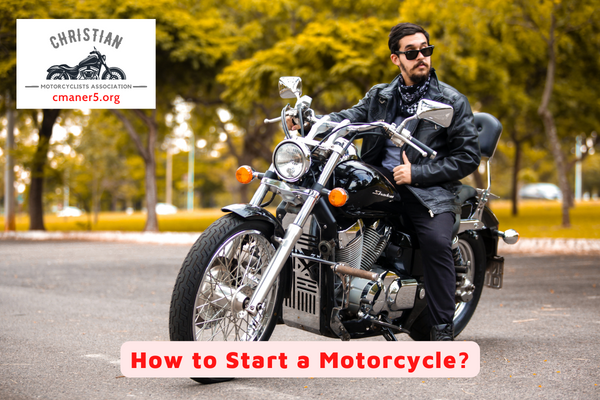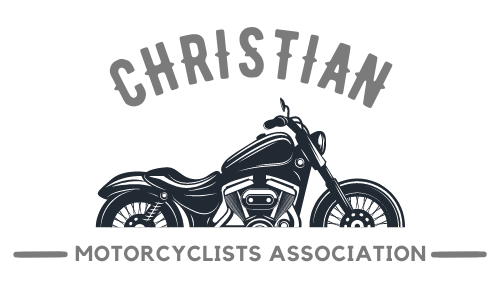How to Start a Motorcycle?

If you want to learn how to start a motorcycle, there are some things you should know before you attempt it. For starters, you should know that you should be able to do this if your bike is fast enough. If the engine is fast enough, you can even try jogging on it to start it. The key to this trick is momentum, just like the starter motor’s, but unlike the battery.
Checking for a healthy voltage
When starting a motorcycle, check for a healthy voltage on the battery. A voltage reading of 12.5 volts or above is ideal. If it’s less than this, the battery has a problem. To test the voltage, you can use a multi-meter. Connect a black wire to the negative terminal and a red wire to the positive. You can also try starting the motorcycle while holding the probes to the terminals.
To check the battery, set the multimeter to measure the running voltage across the battery. Connect the positive and negative leads to the correct terminals on the battery. The voltage should range from 12.5 to 12.9 volts DC. Check the manufacturer’s specifications to determine the exact numbers. If the voltage is greater than 13.5 volts, then the rectifier-regulator is not functioning properly.
Checking for a healthy voltage before starting your motorcycle is a crucial part of preparing your bike for the ride ahead of time. The voltage of your motorcycle’s battery will depend on the load on the battery. If it’s too low, it may indicate other problems with your motorcycle, such as the check engine light or an error code. As a result, it’s important to check the voltage before you start your motorcycle so you don’t end up stranded.
A low voltage reading could mean that the battery isn’t charging properly, or it’s just too old. Fortunately, most premium motorcycles now come with a voltmeter built in. If yours doesn’t, you can buy a multimeter and wire it into the motorcycle battery.
Using a battery pack
If you are stranded on the side of the road and don’t have enough battery power to start your motorcycle, a battery pack can provide the power you need. A battery pack is usually more powerful than a standard battery and can give your bike a full jump start. Motorcycle batteries are relatively small, but they don’t provide as much power as car batteries do. Motorcycle batteries are also susceptible to cold weather, which can deplete their energy level.
When attempting to jump-start a motorcycle, it is important to keep in mind that the battery on a motorcycle can be very worn out after being fully discharged. This means the starting electronics will engage more quickly and can make the motorcycle sound aggressive. To avoid this, disconnect the battery cables once the motorcycle has started and let it sit for about 20 minutes. This will allow the battery to charge before using it on the road again.
The next step is to make sure that you have enough juice in the battery pack. The charge should be high enough to start the motorcycle. Then, you should press the side button to switch the current flow on. The current flow should last for about 30 seconds. This is long enough to start your motorcycle.
When using a battery pack to start a motorcycle, you must always connect the positive and negative terminals before connecting the two battery packs. The positive terminal will be marked with a + sign. Be careful not to touch the metal terminals with your fingers, as the clamps could get hot and cause a spark.
Using the choke
Many motorcycle owners wonder whether it is OK to ride with the choke on. Some motorcycle owners are forced to do so for various reasons, while others may accidentally leave the choke on. While using the choke is not the worst thing to do, it can result in poor fuel efficiency. In some instances, it may even lead to minor issues.
The choke helps the cold engine crank easily, but it also increases fuel consumption. When the engine is cold, fuel vapors are slower to vaporize and the particles in the combustion chamber are smaller. To avoid this problem, it is a good idea to wait a few minutes after starting the motorcycle. After that, you should push the kick-start lever down and turn the motorcycle over. It is also recommended to switch off the choke when you are ready to ride.
Using the choke on a motorcycle is similar to using a car’s choke to start it. In addition to preventing cold engine failure, a choke helps enrich the fuel-air mixture. When the motorcycle is cold, it is difficult for fuel to vaporize, so a rich mixture will help the motorcycle start.
A motorcycle choke works similar to a car’s choke to restrict the flow of air to the engine. It makes the engine run more efficiently and helps the engine start easier. The choke is a mechanical lever that allows you to manually alter the air-fuel ratio in your motorcycle’s engine. Once the engine is warm, you won’t need the choke anymore.
If your motorcycle doesn’t start when you release the choke, you should check the carburetor and fuel injection system. These parts could need to be replaced, or the backpressure in the exhaust system could be out of whack.
Using a jumper cable
If you can’t start your motorcycle, it is possible to jumpstart it with a jumper cable. A jumper cable is a special cable that connects two batteries without running them. A red jumper cable connects to the positive terminal of the motorcycle’s battery, while a black one connects to the negative terminal of the car’s battery.
Jumper cables are available in many different lengths, but one type works better for a big bike engine than another. Make sure to buy a cable that is designed for motorcycles. You’ll also need one that is as short as possible. The shorter the cable, the less stress it will put on the battery. The jumper cable must also be attached to a secure ground.
A jumper cable is designed for motorcycles, but can be used on other two-wheel vehicles. There are two basic types: direct-connect jumper cables and intermediate-connect cables. A direct-connect cable connects one battery to another’s negative post, while an intermediate-connect cable connects two batteries that are close enough to be in close proximity.
It’s important to remember that using a jumper cable to start a motorbike could void the warranty on your car and battery. You should also make sure to switch off both your motorcycle and car before jumping them. In addition, you should connect the jumper cables in the same order as when jump-starting a car. The black, negative clip should be connected to the negative terminal of your car’s battery and the bare metal surface of the bike.
If you can’t start your motorcycle with a jumper cable, it is always safer to jump it using the car’s battery. Most motorcycles have 12-volt batteries, so it’s important to make sure the car has a battery of the same voltage. If possible, you can also use a portable jump starter instead.
Using starter spray
Motorcycle starter spray can be a lifesaver when your bike will not start. It works by injecting a small amount of starter fluid into the carburetor. This liquid then mixes with the fuel to help the engine start. The spray also helps create a spark, which is essential for starting the motorcycle. It is important to use starter spray carefully, however, to avoid damaging the engine.
First, disconnect the spark plug wire from the ignition coil. The ignition coil has two tiny primary wires. The resistance between the primary wires should be between 0.2 and five Ohms. You can also use a multimeter to check the resistance between the primary wires. Once you’ve done that, you’re ready to remove the spark plug cap.
Another method of starting a motorcycle is to use a mixture of gasoline and oil. This mixture is used in two-stroke motorcycles and lawn mowers. You need to make sure that you use a small amount of this mixture, and you need to spray it very sparingly. It’s important to remember that the mixture contains diethyl ether, which can be harmful if inhaled. You should only use this method of starting a motorcycle when it’s a genuine emergency.
Another common cause of motorcycle problems is water in the fuel system. Water in the fuel system will not allow the motorcycle to start, so it’s important to inspect the fuel system and make sure it’s free of water. Water can cause damage to electrical components, and it can also cause the engine to stall or fail completely. If this happens, you should consult a mechanic immediately.
Another common cause of a motorcycle not starting in cold weather is the battery. The battery is less efficient when the ambient air temperature is below freezing.
Related Articles:
How Hard Is It To Ride A Motorcycle?
I’m Morris Wheeler, a mechanical engineer with a love for motorcycles. I write a magazine about motorcycles and technology, and I’m always looking for new ways to improve the riding experience. I’m also a motorcycle safety instructor, and I enjoy helping others learn to ride safely and confidently. When I’m not working or writing, you can find me out on my bike, exploring new roads and trails.
I hope you enjoy reading my articles. Thanks for taking the time to check me out!
